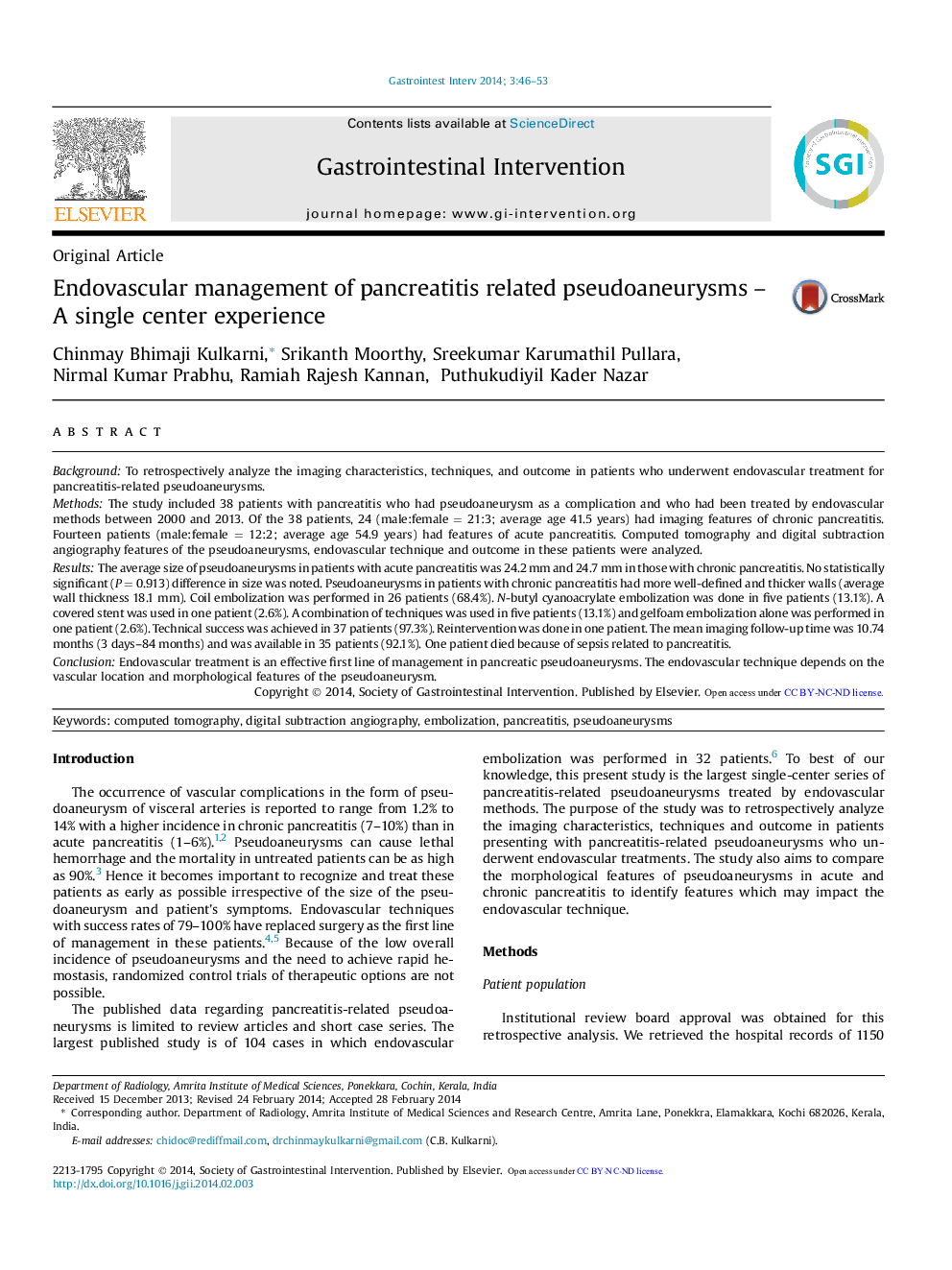| Article ID | Journal | Published Year | Pages | File Type |
|---|---|---|---|---|
| 3311019 | Gastrointestinal Intervention | 2014 | 8 Pages |
BackgroundTo retrospectively analyze the imaging characteristics, techniques, and outcome in patients who underwent endovascular treatment for pancreatitis-related pseudoaneurysms.MethodsThe study included 38 patients with pancreatitis who had pseudoaneurysm as a complication and who had been treated by endovascular methods between 2000 and 2013. Of the 38 patients, 24 (male:female = 21:3; average age 41.5 years) had imaging features of chronic pancreatitis. Fourteen patients (male:female = 12:2; average age 54.9 years) had features of acute pancreatitis. Computed tomography and digital subtraction angiography features of the pseudoaneurysms, endovascular technique and outcome in these patients were analyzed.ResultsThe average size of pseudoaneurysms in patients with acute pancreatitis was 24.2 mm and 24.7 mm in those with chronic pancreatitis. No statistically significant (P = 0.913) difference in size was noted. Pseudoaneurysms in patients with chronic pancreatitis had more well-defined and thicker walls (average wall thickness 18.1 mm). Coil embolization was performed in 26 patients (68.4%). N-butyl cyanoacrylate embolization was done in five patients (13.1%). A covered stent was used in one patient (2.6%). A combination of techniques was used in five patients (13.1%) and gelfoam embolization alone was performed in one patient (2.6%). Technical success was achieved in 37 patients (97.3%). Reintervention was done in one patient. The mean imaging follow-up time was 10.74 months (3 days–84 months) and was available in 35 patients (92.1%). One patient died because of sepsis related to pancreatitis.ConclusionEndovascular treatment is an effective first line of management in pancreatic pseudoaneurysms. The endovascular technique depends on the vascular location and morphological features of the pseudoaneurysm.
